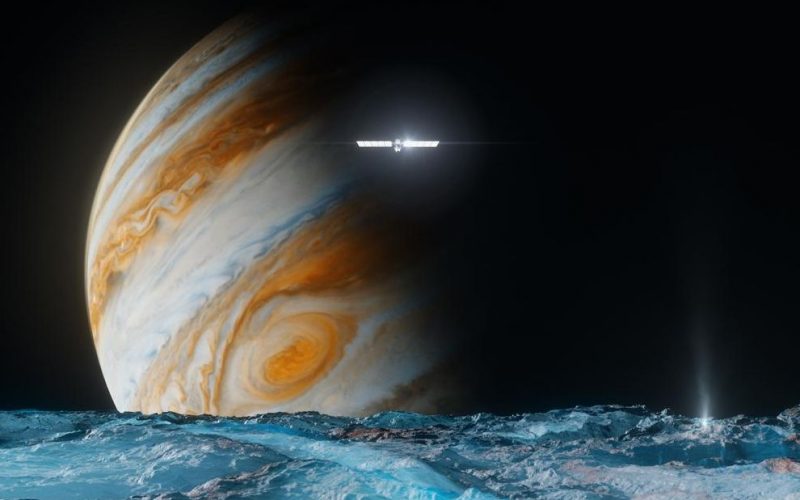A SpaceX rocket launched on Monday the largest space probe in NASA’s history, aimed at determining whether the inhospitable and icy surface of the moon Europa harbors conditions suitable for life.The journey to Jupiter will take five and a half years, and the Europa Clipper mission has cost over $5 billion..
The launch occurred at 19:06 Romania time from NASA’s Kennedy Space Center in Cape Canaveral, Florida.Fifty seconds after liftoff, the Falcon Heavy rocket surpassed the speed of sound.Three minutes after launch, the side boosters separated.
In the last three days, extensive technical checks were conducted to ensure everything was functioning properly.The spacecraft was initially scheduled for launch on October 10, but the decision was made to postpone it due to Hurricane Milton’s devastation in the area.
The probe is expected to reach Jupiter in April 2030 and will begin flybys of Europa in the spring of 2031.A total of 49 flybys are planned over the course of three years.
Under Europa’s thick ice crust lies a subsurface ocean that may contain primitive forms of life.
‘There is compelling evidence that Europa has the necessary ingredients for life, but we need to go there to find out,’ said Bonnie Buratti from NASA’s Jet Propulsion Laboratory, as reported by Reuters.’I want to emphasize that this is not a mission aimed at finding signs of life; we are looking for conditions that are conducive to life.’.
The Europa Clipper carries cameras and spectrometers that will capture high-resolution images of the icy moon’s surface to determine its composition.The probe will not land on Europa, but it will come closer to the moon than any previous probe.
A highly advanced radar will measure the thickness of the ice layer and will attempt to find out if there are any subglacial lakes similar to those in Antarctica.The probe will pass by Europa dozens of times at altitudes ranging from 25 to 2,700 kilometers.
With its solar panels extended, the Europa Clipper measures 30 meters in length.At launch, the probe weighs 6 tonnes, with over 40% of that being fuel.It is equipped with 24 engines.
Europa is a location where life could potentially exist because it has two key elements for the development and sustenance of life: water and energy derived from heat.A third essential element is organic chemicals, similar to environments on Earth where so-called extremophiles—organisms that survive and thrive in dark, cold, and sometimes high-pressure conditions—are found.
Europa in numbers:
Size: 4. 1 times smaller than Earth and slightly smaller than the Moon.
Year of discovery: 1610.
Surface area: 30 million square kilometers (17 times less than Earth).
Equatorial diameter: 3,100 kilometers.
Distance from Jupiter: 671,000 kilometers.
The ice crust is estimated to be between 15 and 25 kilometers thick, while the depth of the salty ocean is estimated to be around 60 to 150 kilometers.

